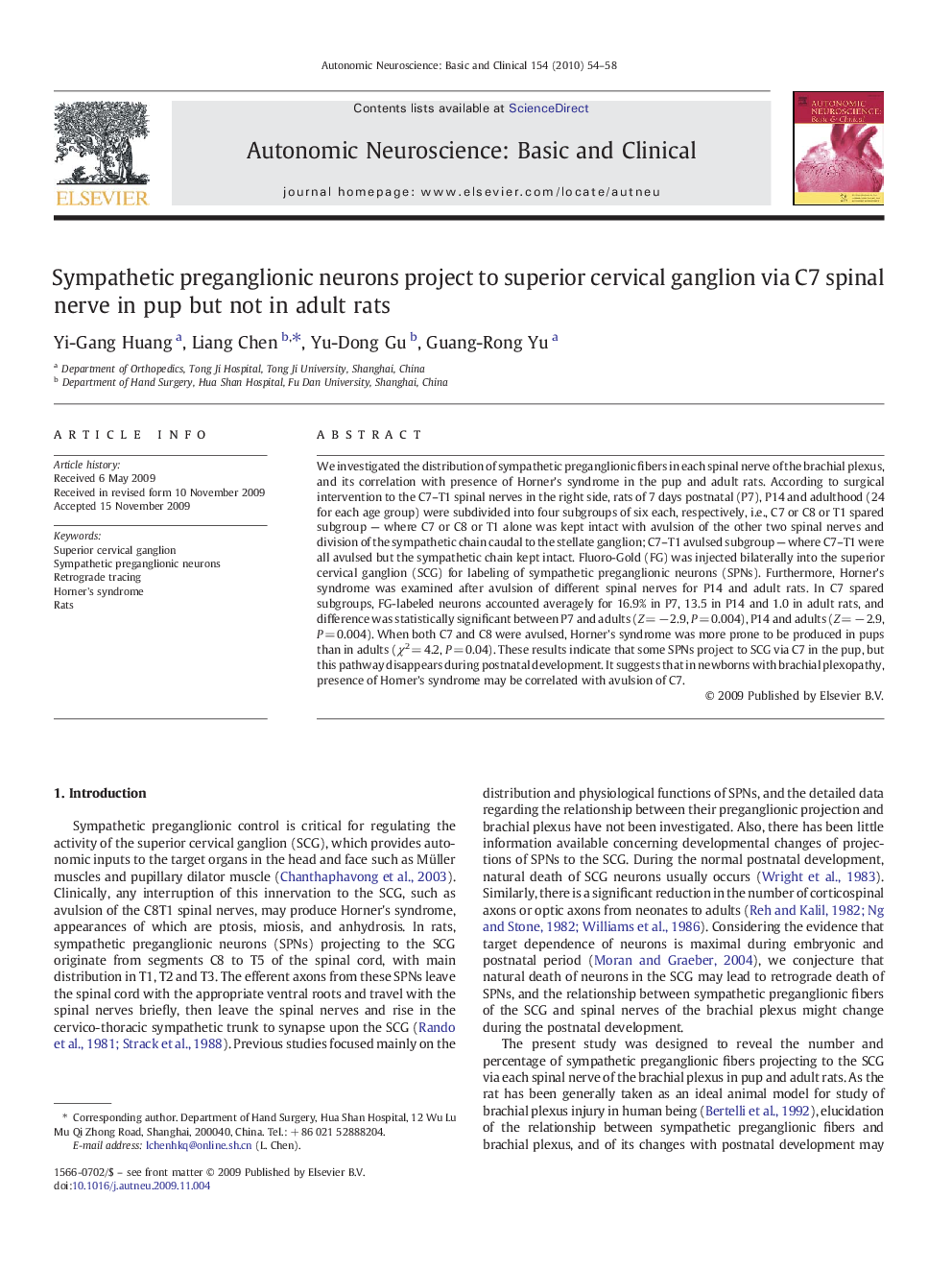| Article ID | Journal | Published Year | Pages | File Type |
|---|---|---|---|---|
| 3035163 | Autonomic Neuroscience | 2010 | 5 Pages |
We investigated the distribution of sympathetic preganglionic fibers in each spinal nerve of the brachial plexus, and its correlation with presence of Horner's syndrome in the pup and adult rats. According to surgical intervention to the C7–T1 spinal nerves in the right side, rats of 7 days postnatal (P7), P14 and adulthood (24 for each age group) were subdivided into four subgroups of six each, respectively, i.e., C7 or C8 or T1 spared subgroup — where C7 or C8 or T1 alone was kept intact with avulsion of the other two spinal nerves and division of the sympathetic chain caudal to the stellate ganglion; C7–T1 avulsed subgroup — where C7–T1 were all avulsed but the sympathetic chain kept intact. Fluoro-Gold (FG) was injected bilaterally into the superior cervical ganglion (SCG) for labeling of sympathetic preganglionic neurons (SPNs). Furthermore, Horner's syndrome was examined after avulsion of different spinal nerves for P14 and adult rats. In C7 spared subgroups, FG-labeled neurons accounted averagely for 16.9% in P7, 13.5 in P14 and 1.0 in adult rats, and difference was statistically significant between P7 and adults (Z = − 2.9, P = 0.004), P14 and adults (Z = − 2.9, P = 0.004). When both C7 and C8 were avulsed, Horner's syndrome was more prone to be produced in pups than in adults (χ2 = 4.2, P = 0.04). These results indicate that some SPNs project to SCG via C7 in the pup, but this pathway disappears during postnatal development. It suggests that in newborns with brachial plexopathy, presence of Horner's syndrome may be correlated with avulsion of C7.
